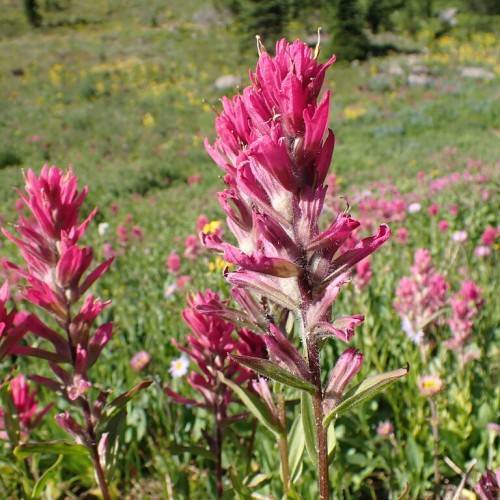
Splitleaf Indian Paintbrush
Castilleja rhexiifolia
Also Known As - Rosy Indian PaintbrushWatering:
Frequent
Hardiness Zone:
Sun:
full sun,part shade
Leaf:
Yes
Growth Rate:
Low
Drought Tolerant:
Yes
Salt Tolerant:
Yes
Thorny:
Yes
Care Level:
Medium
watering
The Olympic Mountains paintbrush should be watered about once a week in the summer and about every 2 weeks in the winter. When watering, soak the soil until it is moist but not overly wet. Allow the top inch of soil to dry before watering the next time. In the winter, water less and allow much of the soil to dry out. Additionally, misting the plant occasionally can help to keep the air around the plant humid.
sunlight
Olympic Mountains Paintbrush (Castilleja parviflora var. olympica) needs a minimum of 4-6 hours of sunlight each day in order to thrive, with indirect sunlight working best for this species. Ideally, this plant should have access to direct sunlight in the early morning and late afternoon, with shade during the mid-day when temperatures tend to be highest and the sun's rays the strongest. Additionally, the plant should be placed in an area that does not receive excessive wind, as this can be drying and damaging.
pruning
Castilleja parviflora var. olympica is a plant species native to the Olympic Mountain Range in Washington State. Pruning should be done annually to maintain the desired shape and size of the plant and to ensure its health. Pruning should be done in late fall or early spring before new growth has started. It is important that any damaged, diseased, or dead stems be removed to prevent the spread of the disease. The plant should be selectively pruned taking out no more than 1-third of the canopy, focusing on thinning and removing spent flower heads. Light pruning helps to promote bushy growth and flowering. Care should be taken to ensure not to damage or cut the plant too harshly as this can lead to stunted growth.
